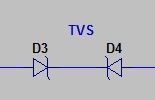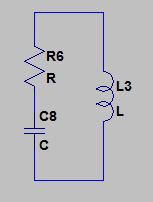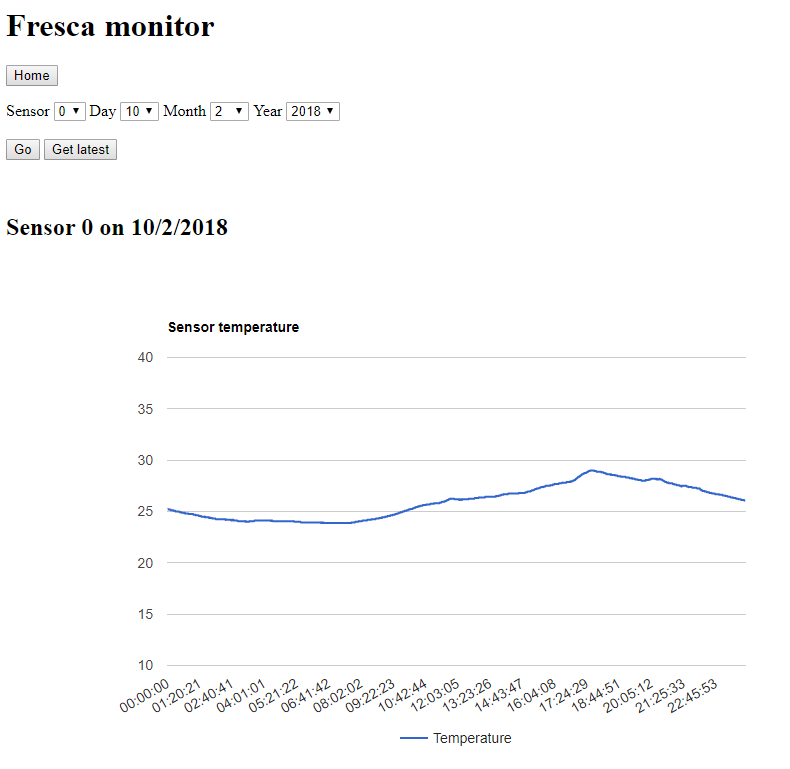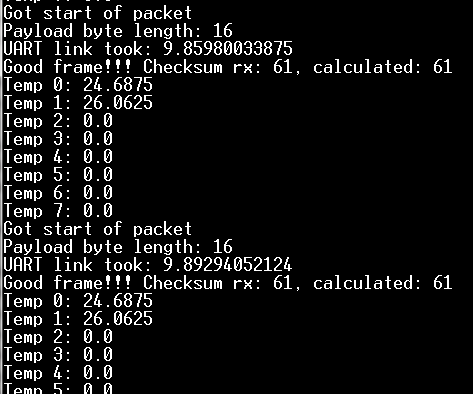-
'Holding' your ground
11/05/2018 at 05:42 • 0 commentsHi all!
For those of you who are setting up projects with inductors, coils, motors, relays and other big inductive things alongside electronics, I have a piece of advice. Most of the time we have to be mindful of them. While setting up 'fresca' to run in a real beer brewing environment, I ran into a lot of trouble with inductive back-spikes. It is a very well known and documented subject for engineers working in industrial environments, but for some people it's not clear as to what happens and when it can become a problem.
Going through school, we used to use a lot of relays, and what your teacher tells you from the first day is: 'you better put an 'anti-parallel diode' across the coil of the relay', and rightly so, you wouldn't want to burn your transistors by the dozens. What is happening? It turns out that inductive elements, like the coil of a relay, store energy in the form of magnetic flux in the coil's core. When you turn-off the current flowing through it, it will try to continue how it was (with the current flowing) until it runs out of energy. Since the circuit is open, it's almost impossible to keep a substantial current running so the physics kicks-in (think Faraday's law) and there's a huge reverse voltage spike applied by the inductor in order to keep the same current flowing. This voltage back-spike could be in the order of kilo-volts (many times it is). So if you have a transistor turning on/off a coil it will face the inductive back-spike each time it turns it off, and that would exceed the maximum permitted collector-emitter voltage (or drain-source for FETs) in turn destroying the transistor.
Now the diode in anti-parallel configuration is there to fix that problem. Since it's in anti-parallel, the diode won't conduct current most of the time (remember, its resistance to reverse voltages is ideally extremely high), but it will conduct current when the transistor turns-off and the relay's coil creates the reverse voltage back-spike (this reverse voltage is forward-biasing from the diodes perspective). This saves our little transistor from having to withstand that massive voltage transient since the diode will conduct all the excess current until the coil runs out of energy. Wonderful and elegant, huh ?
Now if we have AC current, we can't use a single diode to mitigate this effect, since current is flowing in both ways and we don't know exactly the direction of the current when it gets turned off. The solution is in using two Zener diodes in series (and in turn parallel to the coil, with both cathodes facing opposite directions), which will not conduct during normal operation, and will start conducting once the back-spike rises close to the Zener voltage. That means we have to choose the Zener voltage of the diodes to be higher than the peak value of our AC voltage so no conduction happens during normal operation of the circuit.
Now, luckily, there are diodes created only for the purpose of suppressing these voltage back-spikes, they are called Transient Voltage Suppression diodes (TVS diodes). They come in two flavors, unidirectional (DC applications) and bidirectional (AC applications). One important parameter of these diodes is 'Maximum reverse stand-off voltage', this is the maximum voltage at which no current is conducted by the diode hence it has to be selected according to the DC or AC voltage of the application.
There is another solution, but it requires a bit more thought to work properly. It works by using a resistor and a capacitor in series, which are in turn parallel to the coil. This circuit is called a 'snubber' circuit. The values of R and C have to be calculated and that usually means we need to know/measure the resistance and inductance of the coil. You can find more information about this method on the internet.
So how did this affect me in my project you're wondering. All the relays I used were opto-coupled and protected by diodes so they wouldn't destroy the electronics driving it (specially the Arduino!). So this was fine, but when turning on/off the actuators (electrovalves in this case) the Arduino was suddenly resetting itself! Something was going on with voltage back-spikes, I knew this from the start because if I tested the program without any electrovalves or pumps it worked fine. But if the electrovalves were driven by an opto-coupled relay, hence they should be completely isolated from the electronics, how can they affect something in the Arduino board ? Well it turns out that this is when you have to 'hold' your ground :D If the voltage back-spike from an electrovalve is big enough and it happens suddenly enough it can potentially induce currents in close-enough wires (think ground-loop), or it can even go to the mains and get propagated to whatever's connected to it. So the theory is that this back-spikes are so huge that they provoke a ground-bounce in the electronics that makes the voltage of the Arduino power supply drop enough for it to brown-out. I actually simulated this in LTSpice and could see the voltage drop across the Arduino (represented by a graceful resistor). How do we fix this ? Well by using what I just described, diodes, zener diodes, TVS diodes or snubber circuits. Try to reduce the impact of the spike as much as you can. To me the ideal solution is using TVS diodes, but we solved it initially with snubbers in parallel with each of the electrovalves.
Hope you guys got some good pointers out of this, and if you have any question or have anything to add please
PS: Suppressing the voltage back-spikes has the added benefit of increasing the relay life expectancy since the lower voltage prevents arcing on the contacts.
-
fresca-link and webapp looking sharp!
02/14/2018 at 09:06 • 0 commentsHi all, happy new year for all, it's been a long time since last update, but I haven't stopped working on the project.
I finally got around to create a python webapp using flask. flask is a micro-framework for developing web apps with python. The webapp is currently able to display in a chart all log data from fresca-link temperature updates. The charts are being generated using Google Charts.
If you can't imagine how all this looks like, take a look at the following pic:
... it's the barebones, but the functionality is there. You just need to point at the directory where the log files reside and the webapp will take care of everything (uncompressing, parsing and formatting). Then select the desired day of the year that you wish to view, the desired sensor, and it will be neatly displayed in an interactive nice chart.
The log files are created by connecting the arduino and the Raspberry Pi using fresca-link (it will generate one log file per day), then fresca-link will get the data from the sensors and output a nice CSV format log file, and, when it is done for the day, it will compress the file to .tar.gz format to save space (log files can get to 10s of MB depending on the sampling interval).
I will be cleaning up all the code, committing it nicely with documentation to github in the next weeks, and then next move on to more features! :)
Stay tuned!
Leo
-
NEW feature, send temperature updates to Raspberry Pi through 'fresca-link'!
12/20/2017 at 00:03 • 0 commentsHello all!
I've been working on a new feature that will enable communication with a Raspberry Pi or another device that has a UART port. I've called it fresca-link. The idea is to send binary packets of data via UART to update the 'host' with real-time data from the Arduino. fresca-link is a packet based protocol designed for 8 bit microcontrollers that have low processing power. So, most of the protocol-specific words are 8-bits. I've used simple integer checksum for error protection (CRC is either too slow or takes up too much memory). Data sent over the serial link is binary not ASCII! So you can't possibly debug it by sending the output to a console.
Since the arduino is pretty busy with real-time tasks, the master of the communication will be the arduino (hence it will only start communication when it know there is no real-time event coming in the next 100ms, for example). The arduino will send packets first to the host, and then the host will respond accordingly (if necessary). Right now I've tested sending temperature update packets to the raspberry pi, and that works like a charm. Later I plan to make it possible for the 'host' to send configuration data to the arduino so that everything can be remotely controlled.
This is all working on branch 'feat/fresca_link'. Remember to use a level converter 5v <--> 3.3v if you are using a raspberry pi or any other 3.3v part. The raspberry pi receives temperature data by executing a Python script that searches for this 'temperature' packets and displays the parsed temperature on the screen (raspberry pi serial port should be enabled and the serial console feature should be disabled, remember to match baudrates as well). All the arduino code is in the 'arduino' folder, and all the raspberry pi code is in the 'rpi' folder.
Next step would be to create a webserver in the raspberry pi (possibly using 'flask' or 'django' frameworks) to display all this information and have a control panel for configuring fresca's settings. Stay tuned!
PD1: You might see a branch called 'feat/SPIcomms' which will die there, where I tried using SPI as a low-level protocol for fresca-link. Since it's rather inconvenient to use the raspberry pi as an SPI slave, I had to use it as SPI master, and that proved to be very unreliable since the arduino can't respond when it's busy doing real-time tasks (like reading the sensors). It also only reached 100Khz max, so that's about the same speed as UART 115200 (the arduino should do better, but maybe I had a problem with the cables or the level converter, anyway I can't see cause I don't own a scope). Overall it turned out to be very inconvenient, so I turned to the simple and reliable serial port.
PD2: If anyone is interested I can describe the particulars of the fresca-link protocol
-
DHT22 official support, automated builds and more!
12/13/2017 at 00:14 • 0 commentsHey, I've merged the feat/DHT22 branch back to master, officially supporting the DHT22 sensor. Note that the design can deal with any combination of DS18B20/DHT22 sensors. Relative humidity for DHT22 is only used for display in the LCD for now (press left/right keys in the sensor screen), with further improvements planned ahead.
Also note that the project has been restructured to work with automated build tools (files have been moved to different folders, and new libraries were created). It supports 'Arduino-Makefile' and 'platformio' (look for instructions in README.md). The repo now contains submodules, so make sure that when you pull you use:
git pull --recurse-submodulesand if you clone a fresh copy use:
git clone --recursive https://github.com/lcapossio/fresca.gitThat's all for now, in the future I plan to add a webserver feature, most likely with a Raspberry Pi Zero W connected via SPI (there is a webserver branch that uses an ESP8266, but that turned out to be very unreliable and slow)
Stay tuned!
-
Support for the DHT22 and humidity sensing!
11/24/2017 at 09:18 • 0 commentsI've started a new branch with initial support for the DHT22! The branch is called feat/dht22. Currently it supports configuring DS1820/DHT22 on a per sensor basis, so you can have any combination of them! You can also display the current humidity on the LCD screen instead of the temperature.
More updates coming soon.
-
Major update, new feature!
05/30/2017 at 09:58 • 0 commentsHey! Just wanted to let you guys know that I keep working on making this project better. This time there is a new feature as well as new C++ classes. The code has been working for a while and I've just been trying to improve the overall readability and modularity.
The new feature are the Heating Controllers. Now, apart from having an actuator that controls CoolOn/CoolOff thresholds, there is n actuator that changes temperature by making it rise (whatever heating element you connect to your outputs). This means you now have two more thresholds per sensor, HeatOn and HeatOff. Intuitively it's the reverse operation of the Cooling actuator, when temperature falls below the HeatOn threshold, the actuator will activate and will continue active until it rises above the HeatOff threshold. Keep in mind that if the 'Cool' and 'Heat' thresholds overlap the 'Cools' will take precedence (isn't that logical ? :) )
Now you can also enable/disable Cooling or Heating actuators on a per sensor basis (in fresca.ino look for 'g_CoolerEn' and 'g_HeaterEn'). The menu now contains the respective screens to change the new thresholds interactively through the keypad.
The new classes I added aim at offloading some code into separate files and making things more transparent from 'fresca.c' This classes are 'TempActuator' and 'TempController'. 'TempController' instantiates and manages up to two TempActuator classes (one cooling and one heating). The 'TempActuator' class controls the switching of the output actuator as well as the limits for having sensitive thresholds. They both reside in the files 'TempController.c' and ''TempController.h'
That's all for the moment, just also wanted to let you know that in the near future I'm going to add support for a Wifi webserver using an ESP8266 shield, it's exciting!
Cheers,
Leo.
-
New DS1820 class!
05/13/2017 at 09:13 • 0 commentsHey, I have a new update, I'm adding a DS1820 class to make things cleaner and more portable, this class is based off of OneWire class and it contains methods for starting temperature conversion, reading scratchpad and writing user bytes. It looks good! Functionality hasn't been changed, if you want this new class checkout the 'feat/ds1820_lib' branch.
I'll have more updates in the coming weeks, I will add a Wifi shield to make a wireless webserver to monitor temperature remotely.Stay tuned!
Leo
-
First update!
05/01/2017 at 10:35 • 0 commentsThe main code of 'fresca' is working! I tested it thoroughly and it seems to work beautifully. Temperature monitoring and controlling, as well as the user interface are ready to use.
Hope the project is useful to someone else, more improvements are coming. I would love feedback/critiques, as well as feature requests. Also if you use it successfully please comment. If you have any question don't hesitate to ask!
Cheers,
Leo
'fresca' versatile temperature controller
Control temperature for up to 8 separate processes! Cooling/heating control with humidity sensing. Based on Arduino and DS18B20/DHT22.
 Leo
Leo



